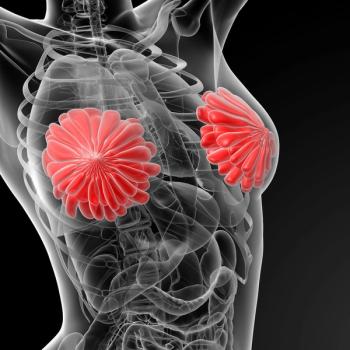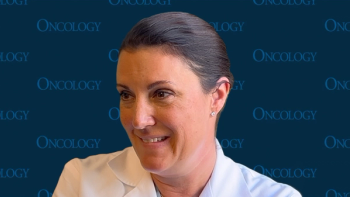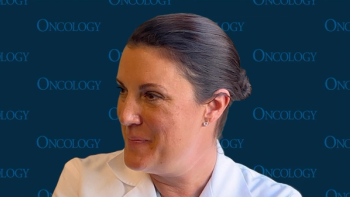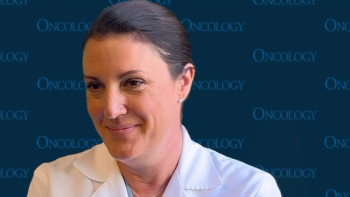
Oncology NEWS International
- Oncology NEWS International Vol 9 No 10
- Volume 9
- Issue 10
Laser Treatment Promising in Highly Selected Breast Cancers
ATLANTA-Experimental use of laser therapy to destroy small, localized breast tumors is showing promise as an alternative to lumpectomy in highly selected patients, researchers from England and the United States reported at the Era of Hope: U.S. Department of Defense Breast Cancer Research Program Meeting.
ATLANTAExperimental use of laser therapy to destroy small, localized breast tumors is showing promise as an alternative to lumpectomy in highly selected patients, researchers from England and the United States reported at the Era of Hope: U.S. Department of Defense Breast Cancer Research Program Meeting.
Interstitial laser photocoagulation has been used on about 100 patients with breast cancer and benign fibroadenoma in various studies that rely on magnetic resonance imaging (MRI), both to detect small areas of cancer for coagulation and to confirm that no tumor remains after laser therapy.
All of the breast cancer patients in England and most in the United States subsequently had scheduled lumpec-tomies. The US team has gone on to treat three patients with laser ablation alone.
Steven E. Harms, MD, professor of radiology, University of Arkansas for Medical Sciences, told ONI: The skin heals in the next few days, and the lump goes away in a few weeks. Patients can look in the mirror, and they cant see that theyve had any treatmenttheres no incision, no scars, no deformity.
The 10-minute procedure is done without general anesthesia, he said. The three patients were sent home with acetaminophen for pain relief and a bandage strip covering an 18-gauge needle puncturethe size of needle used to draw blood. A 71-year-old woman took acetamino-phen for her 3-hour drive home, Dr. Harms said, and the next day felt well enough to cook Christmas dinner for her family.
Stephen G. Bown, MD, director of the National Medical Laser Centre, London, added, Laser treatment is a much simpler procedure to do than surgery, with a lower risk of complications and no hospital admission required in patients who are otherwise generally fit.
Studies of laser photocoagulation of benign fibroadenomas allowed the researchers to assess the long-term healing of laser-treated breast tissue. These studies showed that the necrosis resolved without complications over a period of months. In one study of 14 patients with benign fibroadenomas, only one lesion was still detectable by ultrasound 12 months after laser treatment.
Despite their early successes, both doctors cautioned that, even if validated by clinical trials, the procedure would only be suitable for carefully selected breast cancer patients and should not be considered for any patient whose cancer might have metastasized. Due to technology limitations, the procedure can only be used on cancers of 1 cm or less; these have a 20-year disease-free survival rate of 90% with conventional treatment.
Dr. Harms said, While the cosmetic benefits of laser therapy are significant, the down side of treatment failure would be terrible. We have to be very careful.
In the laser procedure, up to four needles are inserted through the skin into a solid tumor. Thin optic fibers pass through the needles into the targeted lesion. They deliver low-power laser light, typically 2 to 3 W per fiber, from a semiconductor laser (805 nm) to coagulate the tumor tissue.
In the experimental treatments done so far, the doctors have found good correlation between MRI images taken after the procedure and clinical measurement of the surgical specimen after lum-pectomy.
Differences in British and US health care were reflected in the follow-up imaging, according to Dr. Harms. In England, breast cancer patients typically wait several weeks for surgery, so Dr. Bowns group could take MRI images for comparison weeks after the patients laser treatments.
In the US, people arent willing to wait 2 weeks for surgery, Dr. Harms said. Consequently, the Arkansas team did the follow-up MRIs and lum-pectomies on the same day as the laser treatments.
The quality of the MRI images is crucial because the procedure hinges on complete detection and destruction of the tumor. Theres no potential for minimally invasive therapy unless you know where to target it, Dr. Harms said.
His research group developed software called RODEO (ROtating Delivery of Excitation Off-resonance) to enhance standard MRIs. The RODEO images are close to 100% accurate in showing the edges of a tumor, compared with about 50% accuracy for standard imaging techniques, Dr. Harms said.
He has shared RODEO with about a dozen cancer centers free of charge, he said, but it has yet to be licensed by an MRI manufacturer.
The next step is a pilot trial of interstitial laser photocoagulation, followed by a multicenter clinical trial if all goes well. Dr. Harms said he has funding for 20 patients in the pilot study, including the three already treated.
Articles in this issue
about 25 years ago
HER-2/neu Activation May Predict Breast Cancer Prognosisabout 25 years ago
Company Offers Computer-Aided Detection of Breast Cancerabout 25 years ago
ASBD, an Interdisciplinary Group, Fights Breast Cancerabout 25 years ago
How Employers Can Help Caregivers in the Workplaceabout 25 years ago
Only Slight Improvement in Hepatocellular Carcinoma Survivalabout 25 years ago
New BRCA1 Mutations Found in Black and Hispanic Womenabout 25 years ago
Study Shows Profile of At-Risk Elderly Lung Cancer Patientsabout 25 years ago
Scientific Studies Support Strategies to Curb Nicotine Addictionabout 25 years ago
Smoking Declines Among High School Males, But Not FemalesNewsletter
Stay up to date on recent advances in the multidisciplinary approach to cancer.


















































































